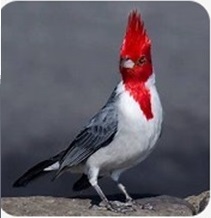You have seen a GIF image and enjoyed it. But have you created one.? There are software programs to create GIFs and perhaps many online sites help creating GIFs. Here is one for example, https://www.canva.com/create/gif-maker/. Animation akin to GIFS can also be created using javascript although there may not be resulting image with a .gif extension.
GIFs are like very small duration video clips but they are really a composite of many small images flipped rapidly, in-situ to create the illusion of motion. They are made to impress you by their motion.
Why GIFS?
Imagine bringing life to a still photo of a sunset by animating the clouds. An image may be worth a thousand words, but a GIF is worth a thousand images. It adds dynamic movement to static images, unleashing your creativity. If you're active on social media, GIFs are an invaluable tool for self-expression, offering endless possibilities. They bring humor, emotion, and laughter to any page, transforming a collection of static images into a vibrant and engaging experience. With GIFs, you can elevate your storytelling to new heights!"
Here is a simple GIF image copied from a web site (display gif on web browser - Search):
Ins and outs of using Python to create GIFs:
GIF images have the .gif extension which stands for Graphics Interchange Format.
In this post, I show you how to create from scratch a GIF using Python. Python uses a image library such as PIL to get the images into the program such as PyCharm. Once they are in the program, you need to use another library to do the flipping action. This library is called imageio, image input/output program. For GIFs this program takes in the images (a number of them) and then it customizes the duration each image is shown; whether the gif repeats itself and how many times it does, etc. Note: if you are new to PyCharm, read up my other Python/Image related posts in this blog, http://hodentekhelp.blogpost.com.
The program presented here also goes through the indexing of the images (as there are many images) which necessitate calling yet another useful library called NumPy. The imageio program cannot accept a image list, but a Numpy list and hence the use of the NumPy library.
In order to create a gif file in a python program, you need the following:
1. A set of images.
2. Importing libraries PIL, ImageIO and Numpy.
Here is are some five image files I am using in the program:
Here is the python program that creates a GIF image taking in the images shown here:
----------------------------
BirdsGIF.py
-----------------
# Import libraries used to create a GIF image
import imageio
import numpy as np
from PIL import Image
from PIL.ImageFile import ImageFile
# Load images
image1: ImageFile = Image.open(r'C:\Users\hoden\PycharmProjects\exploreImage\Images_3\Bird1.jpg')
image2 = Image.open(r'C:\Users\hoden\PycharmProjects\exploreImage\Images_3\Bird2.jpg')
image3 = Image.open(r'C:\Users\hoden\PycharmProjects\exploreImage\Images_3\Bird3.jpg')
image4 = Image.open(r'C:\Users\hoden\PycharmProjects\exploreImage\Images_3\Bird4.jpg')
image5 = Image.open(r'C:\Users\hoden\PycharmProjects\exploreImage\Images_3\Bird5.jpg')
# Resize images (optional)
image1 = image1.resize((200, 200))
image2 = image2.resize((200, 200))
image3 = image3.resize((200,200))
image4 = image4.resize((200,200))
image5 = image5.resize((200,200))
# Create list of images
images = [image1, image2, image3, image4, image5]
# Convert PIL image list to NumPy arrays
images = [np.array(img) for img in images]
# Create the GIF using the image list
imageio.mimsave('my_animation.gif', images, duration=2000.0, loop=5)
----------------------
The above program creates a image file with .gif extension and images show for 2000 milliseconds and the GIF image runs five times in succession. If you have time elapsed stills of any event you can easily turn it into an amazingly dynamic image.
That is all there is to creating a GIF. If your images are made with care and are of good quality you can indeed create a good GIF.
The GIf file created, my_animation.gif can be seen in Photo app on your windows computer device, however you can just drag and drop the image on a browser should also work.







No comments:
Post a Comment